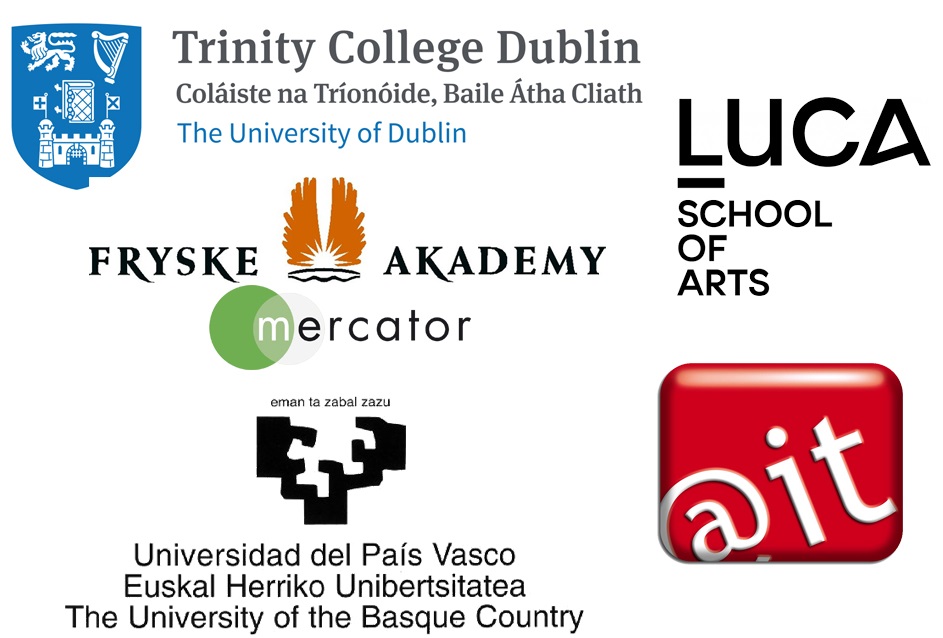The purpose of the videos for the VirtuLApp toolkit is to give examples of practices for creating a multilingual classroom. The videos will amongst others show activities done by pupils in the classroom using more than one language (e.g. the L1, migrant or foreign languages), activities done to make linguistic diversity visible in the classroom and the school, and interviews with teachers about their strategies for creating a multilingual classroom and what challenges they face. The videos are intended for sharing best practices of multilingual approaches across European schools and inspire other teachers to create their own strategies and activities.
Video 1: Taking a multilingual approach
This video provides an introduction to the VirtuLApp video series. It sets out our approach to the topic of multilinguality in primary schools and introduces you to the Twa Fjilden school in Joure, the Netherlands which has made quite a success out of the multilingual nature of its pupils. In the video you will meet teacher Gerrie Bakker and see first-hand how she tackles the challenge of multilingual pupils in her class.
Video 2: Making the school a multilingual space
This video shows an example of how the Twa Fjilden school in the Netherlands creates a multilingual environment.
The Twa Fjilden school in the Frisian-speaking part of the Netherlands focuses on making their pupils’ multilingualism visible in the school and in the classroom. Written signs, worksheets and decorations are all visible in different languages.
Video 3: Home languages in the classroom
In this video we will show you how home languages can be integrated into the classroom. The Twa Fjilden school is located in Friesland, a bilingual region in the Netherlands, where Dutch and the regional language Frisian are official languages, and where migration has increased the number of additional languages spoken by pupils in the school.
Video 4: Taking a multilingual approach: a principal’s view
Principal Paula Dargan of Scoil Bhríde (Cailíní) explains why they welcome pupils to use their home languages within the classroom, in the yard and with their peers.
In this video, we travel to Blanchardtown, Ireland. Here, English and Irish are the official languages, and as migration has increased, so has the number of additional languages in schools. Scoil Bhríde (Cailíní) supports the linguistic diversity of pupils, as such a rich, linguistic environment, helps to develop the children’s awareness of language and to foster interest and curiosity.
Video 5: Taking a multilingual approach involving parents
This video takes us to Dublin, Ireland’s capital city, where English and Irish are the official languages, and where migration has increased the number of additional languages in schools. Griffith Barracks Multidenominational School situated right in the heart of the city was set up in 1994, as one of the very first ‘Educate Together’ Schools in Ireland.
The school actively encourages the involvement of parents in the education programme. Francesca’s daughter went to school in Griffith Barracks where she started a project which directly involves parents in the classroom.
Video 6: Teaching in a multilingual classroom using home languages
We visit the classroom of teacher Maeve Kilroy at Scoil Bhríde (Cailíní). In her her classroom, pupils speak 8 languages amongst them. How does Kilroy incoporate these languages without speaking these herself? We’ll have a look at the classroom activities and hear recommendations for other teachers.
In this video, we travel to Blanchardtown, Ireland. Here, English and Irish are the official languages, and as migration has increased, so has the number of additional languages in schools. Scoil Bhríde (Cailíní) supports the linguistic diversity of pupils, as such a rich, linguistic environment, helps to develop the children’s awareness of language and to foster interest and curiosity.
Video 7: Translanguaging
What is translanguaging? Prof Jasone Cenoz explains the terms and aim of pedagogical translanguaging and spontaneous translanguaging. How does translanguaging work in class, which strategies are there?
We visit the Basque country, a multilingual and autonomous community of Spain with a linguistic diverse population. There are educational programmes with Basque and/or Spanish as medium of instruction. Most pupils are enrolled in the programme with Basque as medium of instruction with Spanish as compulsory subject.
Video 8: Using the linguistic landscape for translanguaging
What do translanguaging activities look like? Prof. Durk Gorter talks about their translanguaging project in Basque, Spanish and English language classes in the 5th and 6th grade of primary school, where Basque is the medium of instruction.
We visit the Basque country, a multilingual and autonomous community of Spain with a linguistic diverse population. There are educational programmes with Basque and/or Spanish as medium of instruction. Most pupils are enrolled in the programme with Basque as medium of instruction with Spanish as compulsory subject.



